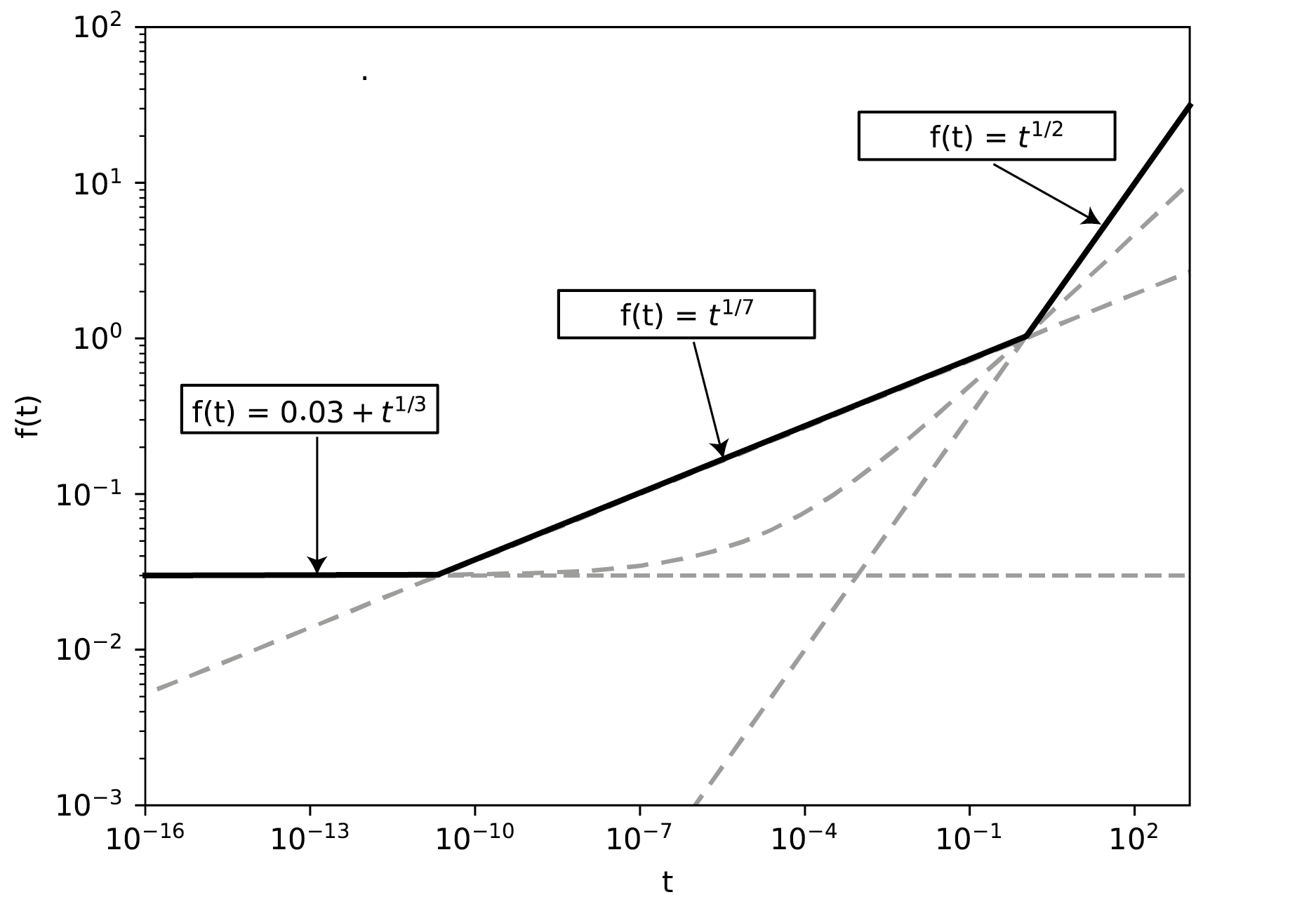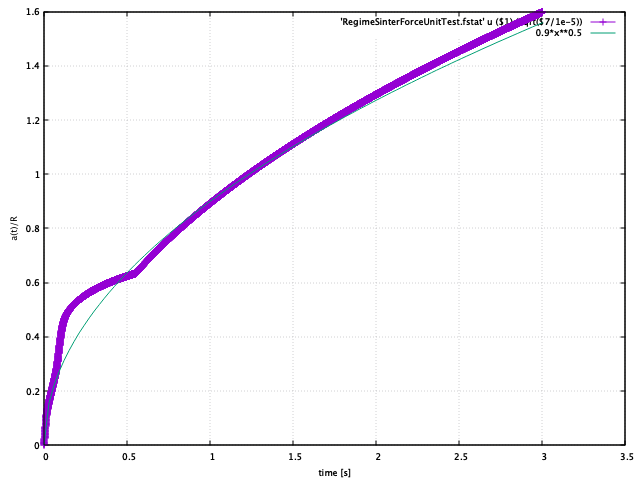 |
|
 |
|
RegimeSinterInteraction model in MercuryDPM referred to as RegimeSinter (RegimeSinterSpecies, RegimeSinterInteraction).
This interaction models three different sintering mechanisms.
The following picture shows the sintering regime map.

If the time after particle contact is sufficiently short that the material is unrelaxed \( t< t_0 \) the dimensionless contact radius is given by the JKR model as
\( \frac{a_0}{R} = (\frac{18\pi C_0 \gamma}{R})^{1/3} \)
where \( R \) is the effective particle radius, \( C_0 \) instantaneus compliance, \( \gamma \) surface tension.
For intermediate times in the interval \( t_0 < t < t_{visc}\), the dimensionless contact radius can be estimated by viscoelastic adhesive contact as:
\( \frac{a_0}{R} = (63(\pi)^{3})^{1/7}(\frac{\delta_c}{R})^{2/7}(\frac{C_1\gamma}{R}t)^{1/7} \)
where \( \delta_c \) is the separation distance from the fracture theory.
Finally, if the time is large enough \( t> t_{visc}\) the contact radius can be obtained using the approach developed by Frenkel
\( \frac{a_0}{R} = (\frac{8C_1 \gamma}{R}t)^{1/2} \)
The interaction force is computed in a similar form as Sintering (time- and temperature- dependent), where the rate of plastic overlap is calculated according to the three different mechanisms.
Header:
Interaction force:
Unit test: RegimeSinterForceUnitTest.cpp
